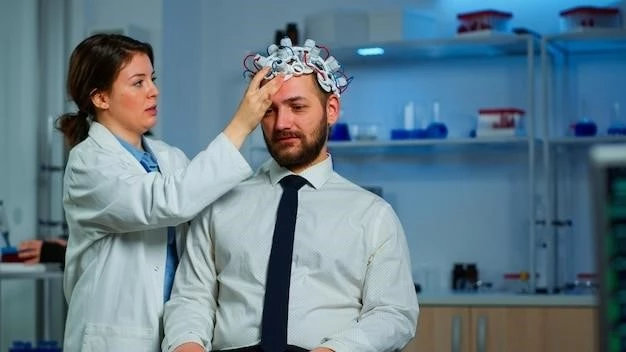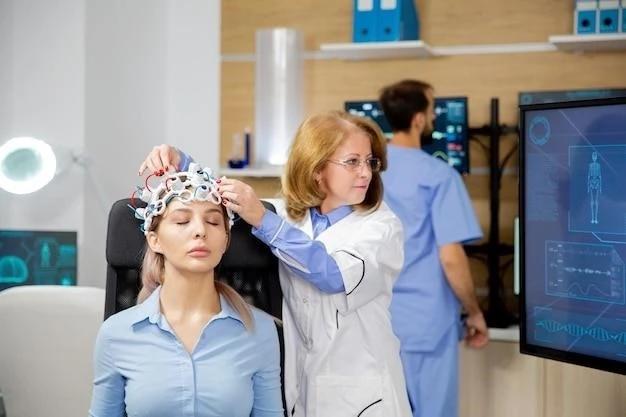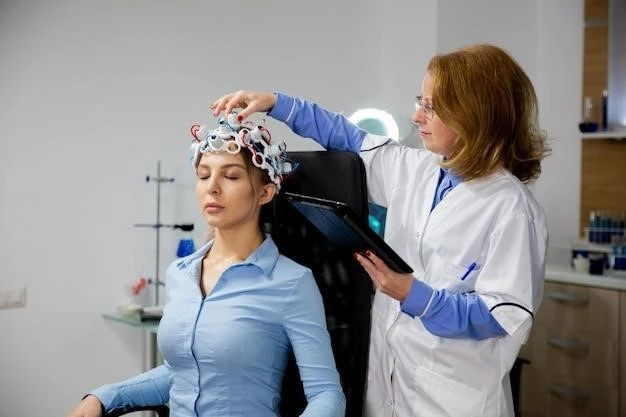Introduction
The rare condition known as Microcephaly pontocerebellar hypoplasia dyskinesia is characterized by neurological involvement, progressive microcephaly, and distinctive clinical features like severe developmental delay.
The syndrome of autosomal recessive pontocerebellar hypoplasia, microcephaly, and extrapyramidal dyskinesia is a rare neurodegenerative disorder characterized by distinct clinical features like severe developmental delay, microcephaly, and dyskinesia. This condition falls under a group of heterogeneous disorders mainly with a prenatal onset, affecting the cerebellum and pons, leading to severe motor and cognitive impairments.
Overview of Microcephaly pontocerebellar hypoplasia dyskinesia
Microcephaly pontocerebellar hypoplasia dyskinesia is a rare neurodegenerative disorder characterized by severe developmental delay and distinct clinical features like progressive microcephaly, dyskinesia, and pontocerebellar hypoplasia. This condition typically presents with neurological involvement from birth, affecting motor and cognitive abilities.
Characteristics of Microcephaly pontocerebellar hypoplasia dyskinesia
The syndrome entails severe developmental delay, progressive microcephaly, and distinctive clinical features like dyskinesia, pontocerebellar hypoplasia, and neurological impairment from birth. The condition is often associated with exuberant chorea, dystonia, myoclonic jerks, and cerebral cortical atrophy.
Common Symptoms and Signs
Patients with Microcephaly pontocerebellar hypoplasia dyskinesia commonly present with severe developmental delay, progressive microcephaly, exuberant chorea and dystonia, myoclonic jerks, pontocerebellar hypoplasia, and progressive cerebral cortical atrophy. Additionally, individuals affected by this condition may exhibit spastic pareses, severe extrapyramidal dyskinesia, and failure to acquire voluntary skills, leading to high morbidity rates.
The rare condition known as Microcephaly pontocerebellar hypoplasia dyskinesia is inherited in an autosomal recessive manner. This means that both parents must carry a copy of the mutated gene to pass the disorder to their children. Due to the autosomal recessive nature of this condition, affected individuals usually inherit two copies of the mutated gene, resulting in the manifestation of the disease.
Specific Genetic Mutations
The genetic basis of Microcephaly pontocerebellar hypoplasia dyskinesia is associated with specific mutations, including the p.A307S mutation in the TSEN54-gene. This mutation is prevalent in individuals exhibiting severe developmental delay, microcephaly, dyskinesia, and pontocerebellar hypoplasia. Understanding the specific genetic mutations can aid in the accurate diagnosis and management of this rare neurodegenerative disorder.
Autosomal Recessive Inheritance
The genetic basis of Microcephaly pontocerebellar hypoplasia dyskinesia follows an autosomal recessive pattern, requiring both parents to carry a mutated gene copy to pass the disorder to offspring. In this inheritance type, affected individuals inherit two copies of the mutated gene, leading to the manifestation of the disease.

Diagnostic Approaches
Imaging studies play a crucial role in diagnosing Microcephaly pontocerebellar hypoplasia dyskinesia, particularly revealing progressive microcephaly, pontocerebellar hypoplasia, and cerebral cortical atrophy. Additionally, genetic testing methods are employed to identify specific mutations associated with this rare neurodegenerative disorder.
Imaging Studies for Diagnosis
Imaging studies, particularly MRI scans, are pivotal in diagnosing Microcephaly pontocerebellar hypoplasia dyskinesia. These studies reveal the classic features of progressive microcephaly, pontocerebellar hypoplasia, and cerebral cortical atrophy, aiding in the accurate identification of this rare neurodegenerative disorder.
Genetic Testing Methods
When diagnosing Microcephaly pontocerebellar hypoplasia dyskinesia, genetic testing methods are essential. Specific genetic mutations, such as the p.A307S mutation in the TSEN54-gene٫ play a crucial role in identifying this rare neurodegenerative disorder accurately. Understanding these mutations is key to providing appropriate care for affected individuals.
Differential Diagnosis
When evaluating suspected cases of Microcephaly pontocerebellar hypoplasia dyskinesia, healthcare professionals may distinguish it from other neurological disorders. This involves comparing the distinctive features and clinical presentation to differentiate accurately.
Comparison with Other Neurological Disorders
When distinguishing Microcephaly pontocerebellar hypoplasia dyskinesia from other conditions, it is vital to note the presence of distinctive features like severe developmental delay, progressive microcephaly, exuberant chorea and dystonia, myoclonic jerks, pontocerebellar hypoplasia, and cerebral cortical atrophy. These unique characteristics aid in accurately identifying this rare neurodegenerative disorder.
Distinctive Features for Diagnosis
Microcephaly pontocerebellar hypoplasia dyskinesia is characterized by severe developmental delay, progressive microcephaly, exuberant chorea and dystonia, myoclonic jerks, pontocerebellar hypoplasia, and progressive cerebral cortical atrophy. These distinctive features facilitate accurate diagnosis of this rare neurodegenerative disorder.
Disease Progression
Natural course and prognosis for individuals with Microcephaly pontocerebellar hypoplasia dyskinesia can involve profound neurological impairments like severe developmental delay, progressive microcephaly, and extrapyramidal dyskinesia. These conditions significantly impact the individual’s developmental milestones and overall quality of life.
Natural Course and Prognosis
The natural course of Microcephaly pontocerebellar hypoplasia dyskinesia entails profound neurological impairments, including severe developmental delay, progressive microcephaly, and extrapyramidal dyskinesia. These factors significantly affect developmental milestones and overall quality of life in affected individuals.
Impact on Developmental Milestones
Microcephaly pontocerebellar hypoplasia dyskinesia significantly impacts developmental milestones in affected individuals, leading to profound neurological impairments, extrapyramidal dyskinesia, severe developmental delay, and progressive microcephaly. These challenges can hinder motor and cognitive development, ultimately affecting the overall quality of life.
Treatment Strategies
Current therapeutic approaches for Microcephaly pontocerebellar hypoplasia dyskinesia aim to address neurological impairments, developmental delays, and extrapyramidal dyskinesia. Management of symptoms involves multidisciplinary care to support affected individuals and optimize their quality of life.
Current Therapeutic Approaches
In managing Microcephaly pontocerebellar hypoplasia dyskinesia, current therapeutic approaches target addressing neurological impairments, developmental delays, and extrapyramidal dyskinesia. Multidisciplinary care is utilized to support affected individuals and enhance their quality of life.
Management of Symptoms
Management of Microcephaly pontocerebellar hypoplasia dyskinesia involves addressing neurological impairments, developmental delays, and extrapyramidal dyskinesia. Multidisciplinary care aims to manage symptoms effectively and improve the overall quality of life in affected individuals.
Research Studies
Latest findings and research directions aim to further understand the unique features of Microcephaly pontocerebellar hypoplasia dyskinesia, including the distinctive genetic mutations associated with the condition. Global collaborative efforts are ongoing to enhance knowledge and diagnostic capabilities in managing this rare neurodegenerative disorder.
Latest Findings and Research Directions
Ongoing research on Microcephaly pontocerebellar hypoplasia dyskinesia focuses on understanding the genetic mutations associated with the condition, particularly the p.A307S mutation in the TSEN54-gene. These findings contribute to advancements in accurate diagnosis and the development of targeted treatments in managing this rare neurodegenerative disorder.
Global Collaborative Efforts in Understanding the Disease
International collaborative efforts are ongoing to enhance the understanding of Microcephaly pontocerebellar hypoplasia dyskinesia. Researchers worldwide are working together to delve into the distinctive genetic mutations and clinical features associated with this rare neurodegenerative disorder. Through global cooperation, advancements in knowledge and diagnostic capabilities are being pursued to improve patient care.

Case Studies
Illustrative cases of Microcephaly pontocerebellar hypoplasia dyskinesia showcase severe developmental delay, progressive microcephaly, and distinct neurological impairments like exuberant chorea and dystonia, myoclonic jerks, pontocerebellar hypoplasia, and progressive cerebral cortical atrophy. These cases highlight the challenging nature of this rare neurodegenerative disorder.
Illustrative Cases of Microcephaly pontocerebellar hypoplasia dyskinesia
Two clinically diagnosed cases highlight the distinct features of this rare condition, including profound neurological impairments like severe developmental delay, progressive microcephaly, exuberant chorea, dystonia, myoclonic jerks, pontocerebellar hypoplasia, and progressive cerebral cortical atrophy. These cases exemplify the complexity and challenges associated with Microcephaly pontocerebellar hypoplasia dyskinesia.
Clinical Observations and Outcomes
Clinical cases of Microcephaly pontocerebellar hypoplasia dyskinesia depict severe developmental delay, progressive microcephaly, along with neurological impairments such as chorea, dystonia, myoclonic jerks, pontocerebellar hypoplasia, and cerebral cortical atrophy. These observations underline the profound challenges associated with this rare neurodegenerative disorder and the impact it has on affected individuals.
Complications
Potential complications associated with Microcephaly pontocerebellar hypoplasia dyskinesia include profound neurological impairments, severe developmental delay, exuberant chorea, dystonia, myoclonic jerks, pontocerebellar hypoplasia, and progressive cerebral cortical atrophy. These complications significantly impact the quality of life and overall prognosis of affected individuals.
Potential Complications Associated with the Disease
Potential complications linked to Microcephaly pontocerebellar hypoplasia dyskinesia encompass severe neurological impairments like developmental delay, microcephaly, exuberant chorea and dystonia, myoclonic jerks, pontocerebellar hypoplasia, and progressive cerebral cortical atrophy. These complications significantly impact the quality of life and overall prognosis of affected individuals.
The impact of Microcephaly pontocerebellar hypoplasia dyskinesia on the quality of life is substantial, with potential complications including severe neurological impairments, developmental delays, and progressive microcephaly. These challenges affect daily functioning and overall well-being, highlighting the complexities of managing this rare neurodegenerative disorder.
Impact on Quality of Life
The impact of Microcephaly pontocerebellar hypoplasia dyskinesia on individuals includes profound neurological impairments, developmental delays, and progressive microcephaly. These challenges significantly influence daily functioning and overall well-being.
Genetic Counseling and Family Planning
Genetic counseling for families affected by Microcephaly pontocerebellar hypoplasia dyskinesia plays a crucial role in understanding the inheritance pattern and the implications for future generations. It aids in making informed decisions related to family planning and managing the risk of passing on the condition to offspring.
Early Intervention Strategies
Early intervention strategies for Microcephaly pontocerebellar hypoplasia dyskinesia are crucial in addressing developmental delays, neurological impairments, and motor difficulties. These strategies aim to provide targeted interventions and support to optimize outcomes for affected individuals.
Patient Support and Resources
Support groups and organizations dedicated to Microcephaly pontocerebellar hypoplasia dyskinesia provide valuable resources, information, and emotional support for affected individuals and their families. Accessible educational materials aid in raising awareness and understanding of this complex neurodegenerative disorder.
Support Groups and Organizations
Support groups and organizations offer crucial resources and emotional support for individuals and families impacted by Microcephaly pontocerebellar hypoplasia dyskinesia. They provide valuable educational materials and foster a sense of community in navigating the challenges associated with this rare neurodegenerative disorder.
Available Educational Materials
Educational materials about Microcephaly pontocerebellar hypoplasia dyskinesia are essential for raising awareness and understanding this complex neurodegenerative disorder. These resources offer valuable information to individuals, families, and healthcare professionals to enhance knowledge and support in managing the condition.
Conclusion
Summary of Key Points on Microcephaly pontocerebellar hypoplasia dyskinesia⁚ Understanding the genetic mutations associated with the condition is crucial in diagnosis and management. Collaborative research efforts contribute to advancements in care and support for affected individuals.
Summary of Key Points on Microcephaly pontocerebellar hypoplasia dyskinesia
Based on the information from the internet today, Pontocerebellar Hypoplasia Type 2 (PCH2) is a rare autosomal recessive condition characterized by neurological impairments٫ developmental delay٫ microcephaly٫ and dyskinesia. The syndrome involves severe hypoplasia or atrophy of the cerebellum and ventral pons٫ leading to distinct clinical features like microcephaly٫ extrapyramidal dyskinesia٫ and developmental challenges. The condition is associated with specific genetic mutations٫ emphasizing the importance of understanding the genetic basis for accurate diagnosis and management strategies. Multidisciplinary care and early intervention are essential in supporting affected individuals and optimizing outcomes.
